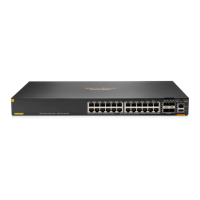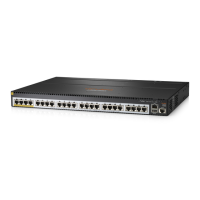35
IP address allocation sequence
The DHCP server selects an IP address for a client in the following sequence:
1. IP address statically bound to the client's MAC address or ID.
2. IP address that was ever assigned to the client.
3. IP address designated by the Option 50 field in the DHCP-DISCOVER message sent by the
client.
Option 50 is the Requested IP Address option. The client uses this option to specify the wanted
IP address in a DHCP-DISCOVER message. The content of Option 50 is user defined.
4. First assignable IP address found in the way discussed in "DHCP address assignment
mech
anisms" and "Principles for selecting an address pool."
5. IP address that was a conflict or passed its lease duration. If no IP address is assignable, the
server does not respond.
NOTE:
• If a client moves to another subnet, the DHCP server selects an IP address in the address pool
matching the new subnet. It does not assign the IP address that was once assigned to the client.
• Conflicted IP addresses can be assigned to other DHCP clients only after the addresses are in
conflict for an hour.
DHCP server tasks at a glance
To configure the DHCP server, perform the following tasks:
1. (Optional.) Creating a DHCP user class
2. Configuring an address pool on the DHCP server
3. (Option
al.) Modifying the address pool selection method on the DHCP server
{ Applying an address pool to an interface
{ Configuring a DHCP policy for dynamic assignment
4. Enabling DHCP
5. Enabling the DHCP server on an interfa
ce
6. (Optional.) Configuring advanced DHCP features
{ Configuring IP address conflict detection
{ Enabling handling of Option 82
{ Configuring the DHCP server security features
{ Configuring DHCP server compatibility
{ Setting the DSCP value for DHCP packets sent by the DHCP server
{ Configuring DHCP binding auto backup
{ Enabling client offline detection on the DHCP server
7. (Optional.) Configuring SNMP notification and logging
{ Configuring address pool usage alarming
{ Enabling DHCP logging on the DHCP server

